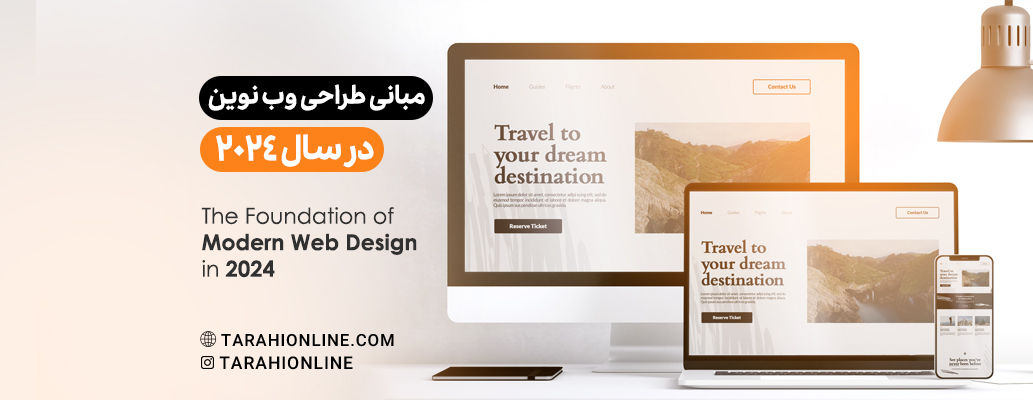
In the current digital environment, the significance of web design extends beyond visual appeal—it's about delivering seamless, accessible, and immersive user experiences. With an estimated 5 billion internet users worldwide in 2024, standing out by investing in exceptional web design has become a critical element in staying competitive. This detailed guide takes an in-depth look at the modern web design standards that are necessary to elevate your website's performance in today's digital landscape.
Responsive Design: A Necessary Component
Responsive design is fundamental in modern web design. With a significant portion of web traffic originating from mobile devices, adopting a mobile-first approach is crucial. Key considerations for responsive design include:
-
Fluid grid layouts that automatically adapt to various screen sizes, providing optimal viewing experiences.
-
Flexible images and media that scale appropriately to fit different device resolutions, reducing loading times and improving visual consistency.
-
Breakpoints that ensure seamless transitions between different screen sizes, preserving content hierarchy and readability.
-
Performance optimization for varying connection speeds, ensuring fast loading times across different devices and network conditions.
Accessibility Standards (WCAG 2.2)
Inclusive web design isn't just good practice—it's essential for compliance and reaching a broader audience. Focus on implementing the following accessibility standards:
-
Clear color contrast ratios for enhanced readability, ensuring text and visual elements are easily distinguishable for users with visual impairments.
-
Proper heading hierarchy to improve accessibility for screen reader users, making it easier to navigate and understand page content.
-
Alternative text descriptions for images, allowing users with visual impairments to understand the context and content of visual elements.
-
Keyboard navigation support for users who rely on keyboard-only navigation, ensuring essential website functions are accessible without requiring the use of a mouse.
-
ARIA labels for interactive elements to provide context and functionality for users relying on assistive technologies, improving the overall accessibility of dynamic website content.
Design Trends Shaping 2024
Minimalism with a Purpose
Modern web design focuses on purposeful minimalism, prioritizing:
-
Clean, uncluttered layouts that improve readability and user focus, removing unnecessary design elements and distractions.
-
Strategic use of white space to emphasize important content and guide user attention, creating a sense of balance and harmony in the design.
-
Clear typography hierarchies that help users easily distinguish different content elements, improving the scannability and visual hierarchy of web pages.
-
Intentional color schemes that effectively guide user attention, using contrasting colors to highlight critical elements and calls to action.
Interactive Elements and Micro-animations
Subtle interactions enhance user engagement without compromising performance:
-
Hover effects that provide feedback to users, indicating interactable elements and adding depth to the user experience.
-
Smooth scroll animations that create seamless transitions between content sections, improving navigation and user engagement.
-
Loading state indicators that inform users about ongoing processes, providing a sense of progress and responsiveness during page loads or data submissions.
-
Micro-interactions that guide users through specific actions, offering subtle feedback and direction to enhance the overall user experience.
Technical Standards and Performance
Core Web Vitals Optimization
Google's Core Web Vitals have become critical ranking factors, emphasizing:
-
Largest Contentful Paint (LCP) under 2.5 seconds, ensuring primary content loads quickly and reduces user frustration.
-
First Input Delay (FID) under 100 milliseconds to provide a responsive and seamless browsing experience, allowing users to interact with content without delays.
-
Cumulative Layout Shift (CLS) under 0.1 to minimize unexpected layout shifts, improving visual stability and user engagement.
Security Standards
Modern websites must prioritize security:
-
HTTPS implementation to encrypt communication between users and the website, ensuring data privacy and integrity.
-
Regular security audits to identify and address vulnerabilities, minimizing the risk of data breaches and maintaining user trust.
-
Secure form handling that safeguards user data during transmission, preventing unauthorized access or manipulation.
-
Data encryption practices to protect sensitive information both at rest and in transit, ensuring user data remains secure throughout its lifecycle.
User Experience Principles
Navigation and Information Architecture
Effective navigation remains crucial for user engagement and content discoverability:
-
Clear menu structures that allow users to easily explore the website and find the information they need.
-
Breadcrumb navigation for complex websites with multiple levels of content hierarchy, helping users maintain context and understand their current location within the website structure.
-
Search functionality that allows users to quickly locate specific content, improving the overall usability and accessibility of the website.
-
Logical content hierarchy that enables users to easily understand the relationship between different content elements, guiding them through the information architecture.
Content Presentation
Content presentation should be:
-
Scannable and well-structured, allowing users to quickly absorb information and identify key points.
-
Enhanced with visual elements such as images, infographics, or videos to improve comprehension and engagement.
-
Optimized for featured snippets, increasing the visibility and click-through rate of content in search engine results.
-
Regularly updated and relevant to maintain user interest and ensure accuracy, fostering trust and authority in the website's content.
In conclusion, modern web design standards prioritize responsive design, accessibility, visual aesthetics, performance, security, and user experience. By focusing on these key elements, your website can stand out from the competition, engage users effectively, and achieve its goals in today's ever-evolving digital landscape.